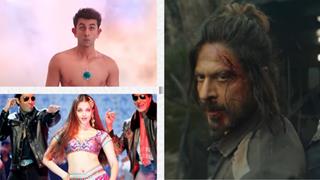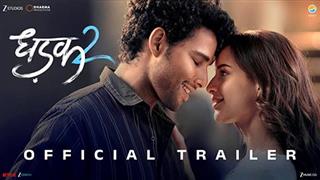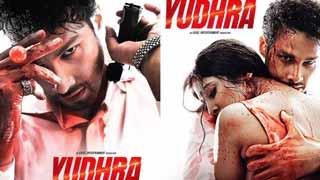Director: Shazia Iqbal
Rating: ***
When the original Dhadak (2018) concluded with Janhvi Kapoor's harrowing scream, it left audiences with an unforgettable sense of grief and injustice. Now, Dhadak 2 arrives in 2025, directed by Shazia Iqbal, with Triptii Dimri delivering a similarly impassioned scream—yet one that echoes less in the heart and more in the ears. Despite bold intentions, this sequel struggles to balance its socially charged theme with cinematic impact.
Thematic Focus: Caste-Based Discrimination Takes Center Stage
Set against the backdrop of caste-based oppression, Dhadak 2 aims to spotlight deep-rooted societal injustices. Inspired by Pariyerum Perumal (2018), the film attempts to challenge the status quo. However, unlike its fearless Tamil predecessor, Dhadak 2 feels restrained, diluted—perhaps softened intentionally to navigate censorship or political sensitivities.
While the narrative flirts with hard-hitting truths, it rarely commits to them. The climactic monologues and dialogue redubs seem like compromises rather than bold statements. The result is a film that speaks, but never quite roars.
Standout Performances: Siddhant Chaturvedi and Triptii Dimri Shine
If there’s one saving grace in this uneven narrative, it’s the compelling performances. Siddhant Chaturvedi delivers a career-defining portrayal as Neelesh, a young man battling the invisible chains of caste prejudice. His nuanced acting brings internalized trauma and simmering rage to the surface in a raw, emotionally resonant manner.
Triptii Dimri, as Vidhi, rekindles the passionate intensity that marked her role in Laila Majnu. Her chemistry with Siddhant anchors the emotional core of the film, and she makes a strong case for Vidhi’s inner transformation from privilege to awareness.
Supporting actors like Anubha Fatehpura and Vipin Sharma (as Neelesh’s parents) add layers of emotional depth. Zakir Hussain, playing the morally upright college principal, acts as a steadying force in Neelesh’s turbulent journey. Saurabh Sachdeva, though intended as a menacing figure, never fully transforms into the terrifying antagonist the story demands.
Inconsistency Weakens the Narrative Impact
Despite its powerful subject, Dhadak 2 suffers from storytelling inconsistency. The screenplay moves in fragments, diluting the emotional intensity. Scenes that should leave you gutted—Neelesh’s pet being killed by upper-caste aggressors, his father being publicly humiliated, or his senior’s suicide—are impactful in isolation but fail to build sustained tension.
These disjointed moments mirror the protagonist’s own struggle with identity. The film wants to say something important but seems unsure of its audience—or perhaps fearful of them.
Sharp Commentary That Lacks Sharpness
While the film flirts with satire and socio-political commentary, it hesitates to cut deep. There are clever barbs—mocking public figures like Vijay Mallya and Arvind Kejriwal—and strong moments like Vidhi's monologue that critiques the concept of “ghar ki izzat”. She unapologetically tears down patriarchal notions that equate modern women with dishonor.
Similarly, a moving dialogue from Neelesh’s father subtly redefines masculinity and honor. These moments hint at a braver film, but they are exceptions rather than the rule.
Visual Symbolism: The Power of Blue
Shazia Iqbal’s visual storytelling deserves praise, especially her symbolic use of the color blue, aligning with the Jai Bhim movement. Portraits of Dr. B.R. Ambedkar, Savitribai Phule, and Jyotirao Phule are respectfully woven into the frame, offering a quiet but powerful tribute to India’s anti-caste reformers.
This visual layer adds dignity and depth, even when the screenplay falters. It’s here that the film tries to do what its dialogue doesn’t—speak truth through imagery.
The Irony of Love Within the Caste System
The title Dhadak, meaning heartbeat, becomes an ironic metaphor in the sequel. Love, in this film, is no longer just an emotional experience—it’s a political act. The idea of falling in love while carrying the burden of caste becomes a commentary on societal rigidity. And yet, Dhadak 2 avoids fully confronting that discomfort.
The cinematic journey from Sairat (2016) to Pariyerum Perumal (2018), and now Dhadak 2, reflects how little has changed in society, despite how much these films wish it had. The sequel echoes this disappointment without fully embracing the radical energy it could have harnessed.
Final Verdict: A Stirring Film That Stops Short of Greatness
Dhadak 2 is a film that undeniably has its heart in the right place. Its ambition to address caste, privilege, honor, and rebellion is commendable. With passionate performances and visually rich symbolism, it does manage to stir you. But it stops short of shaking you—short of making the unapologetic, fearless statement it was capable of.
In a world desperate for honest, disruptive cinema, Dhadak 2 feels like a whispered protest in a world that needs a scream.
Emotionally stirring, but narratively cautious.



















